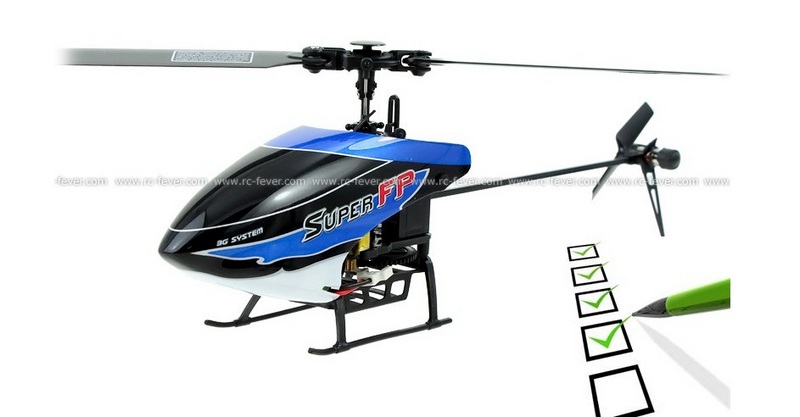

Playing RC helicopter is really a wonderful thing but you need to do some checking before flight, spend a little time may save you more time for flight and much money to buy another RC helicopter.
The structure of RC helicopter is quite complicated, there are many parts that are very important during flight, such as servos, motor, gear or even a single screw. One of them go wrong may lead to a crash, seriously, may cause the human injure.
Therefore we need to do a pre-flight check to decrease the chance of go wrong. It just takes a little time and you can follow the checklist that RC FEVER recommended to you.
Screws:
Make sure all the screws are on tight, remember, are all. One loose screw may cause a lot of things, the servos screw loose will cause the inaccurate of servo travel, cause others screws loose together so lead to unstable body, cause the motor stop contact to the gear. Your can foresee the result of them is crash and crash.
Plastic parts:
Same effect of the screws, parts such as ball linkage and servo horn. Ball linkage need to be very smooth, it may damage by friction and if it is not tight and pop off it can result in the uncontrolled swash plate.
Wires:
There are many wires such as ESC to motor, ESC to battery, servo to controller, controller to receiver etc. Just visually check whether the wires are in good condition or not, do they damaged? Do the plug loosely connected?
Gears:
Try to rotate the blade and do the gears broken? If all gears work probably, the main blade and tail blade rotation should be very smooth. Visually check whether something stick on the gear tooth.
Battery:
Check and make sure the battery are fully charged, use voltmeter to measure the voltage before flight to ensure the RC helicopter have enough power. Also don’t use the damaged battery since it is very dangerous.
Body:
Make sure all the parts are firmly mounted on the helicopter body, zip ties and Velcro are your friends, prevent the unbalance and hinder.
Transmitter:
After the structure checking, now is the transmitter checking, do the servos move in the right direction with transmitter? Does the throttle hold function work properly? Does the battery have enough power?
After that you can fly freely, it only takes one to two minutes for checking, very fast if your RC helicopter has no problem, enjoy it!